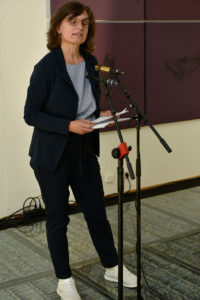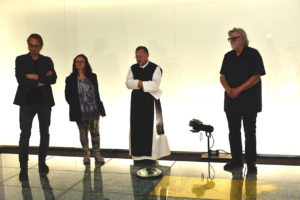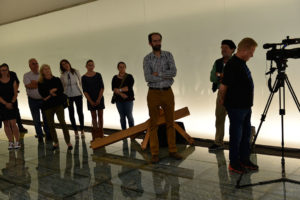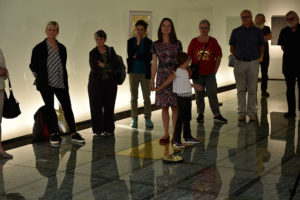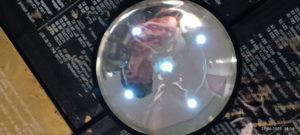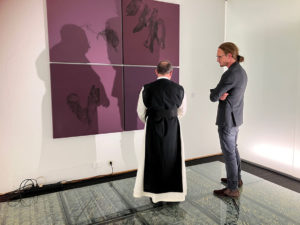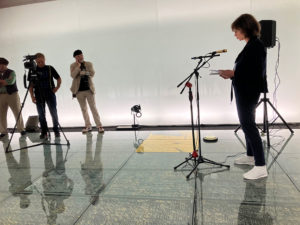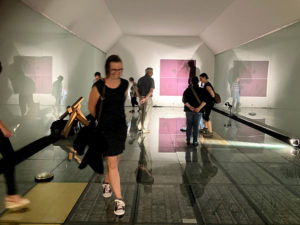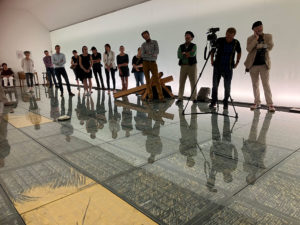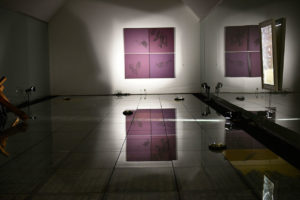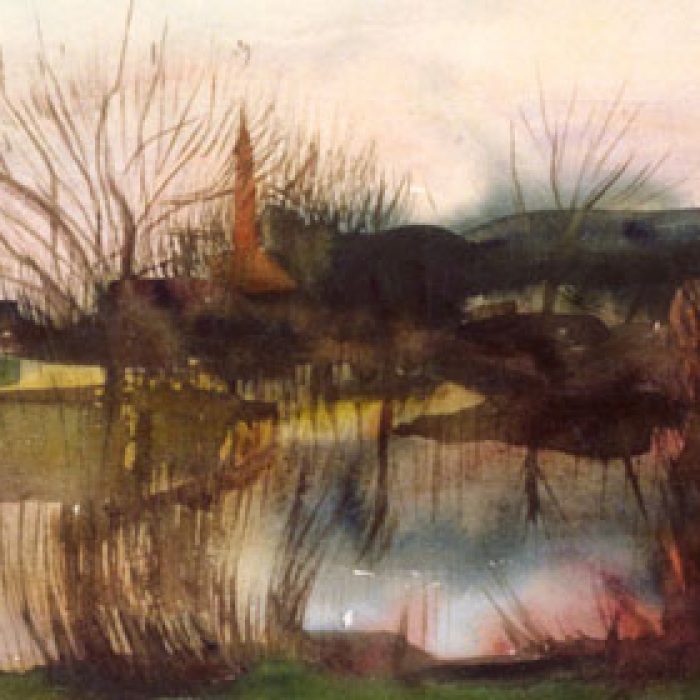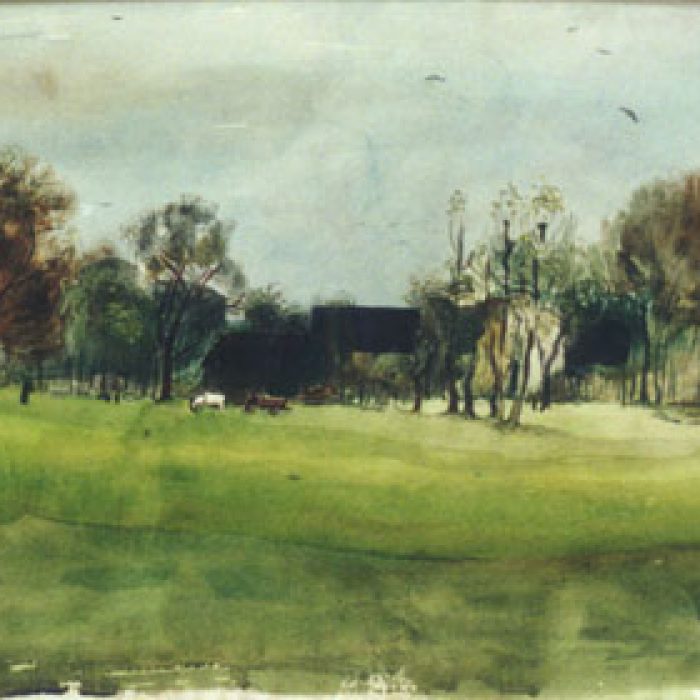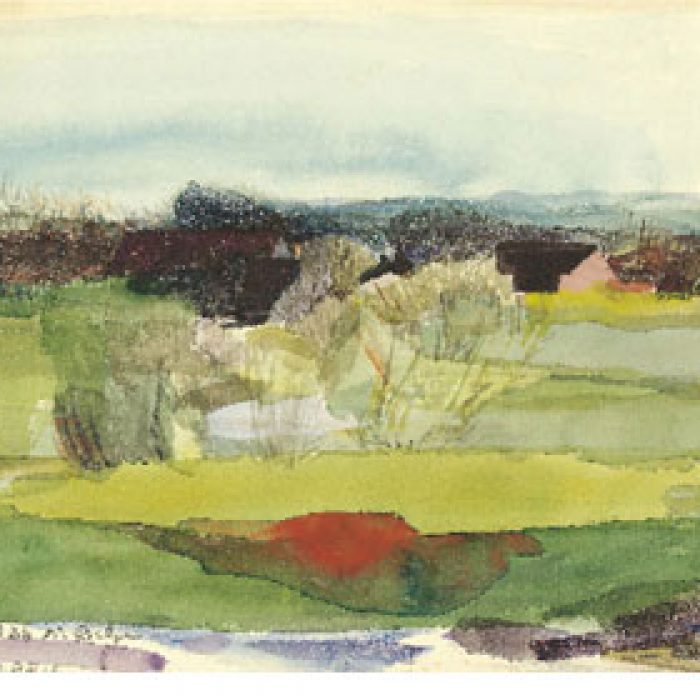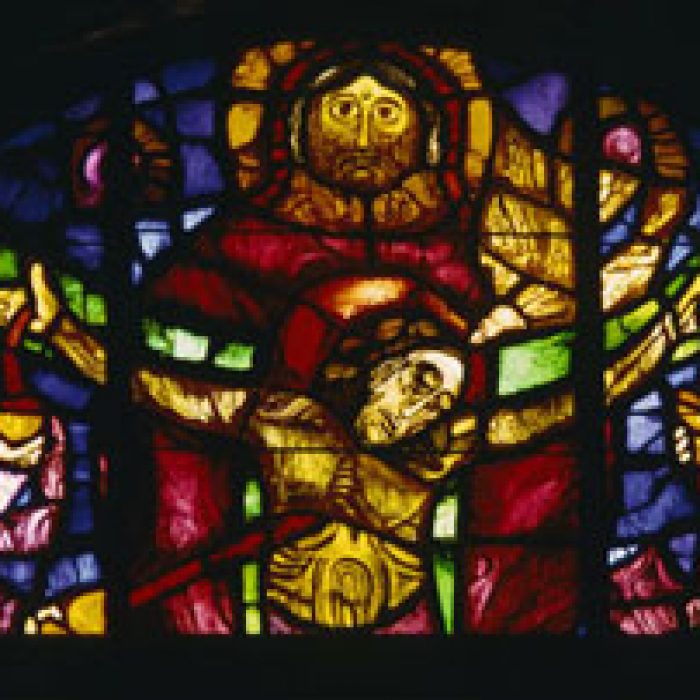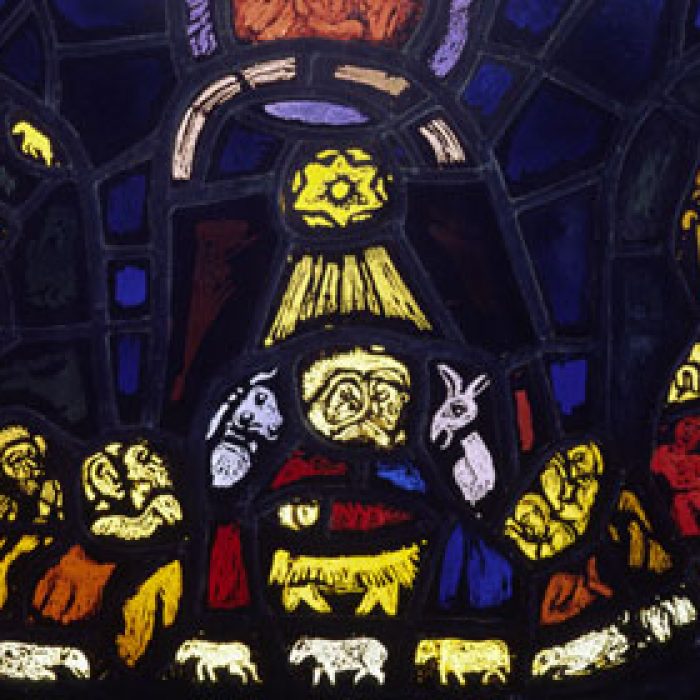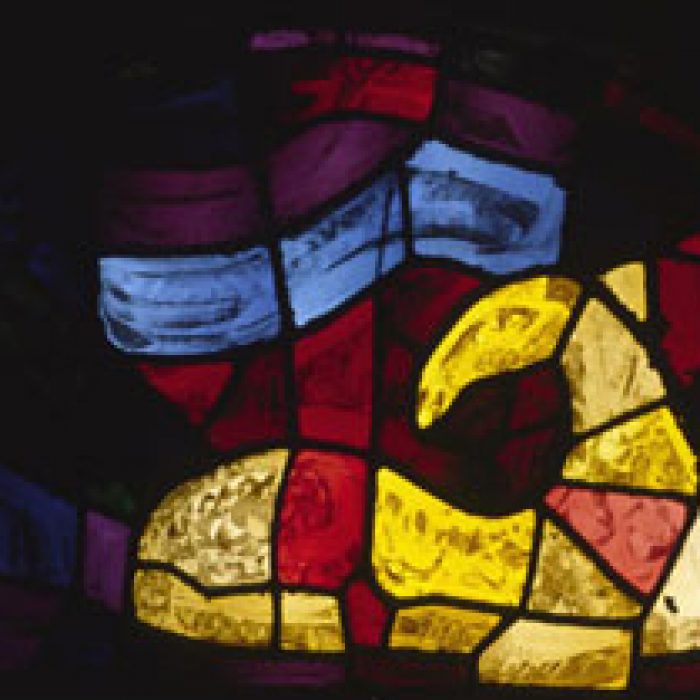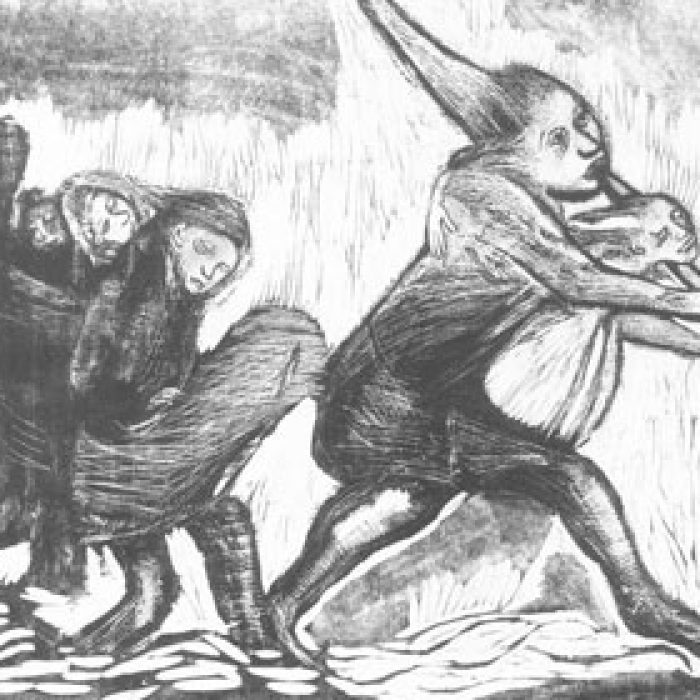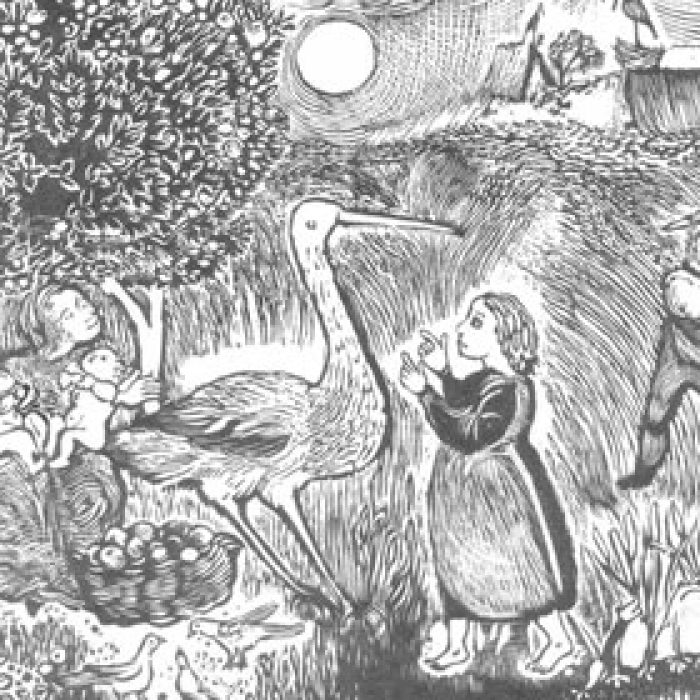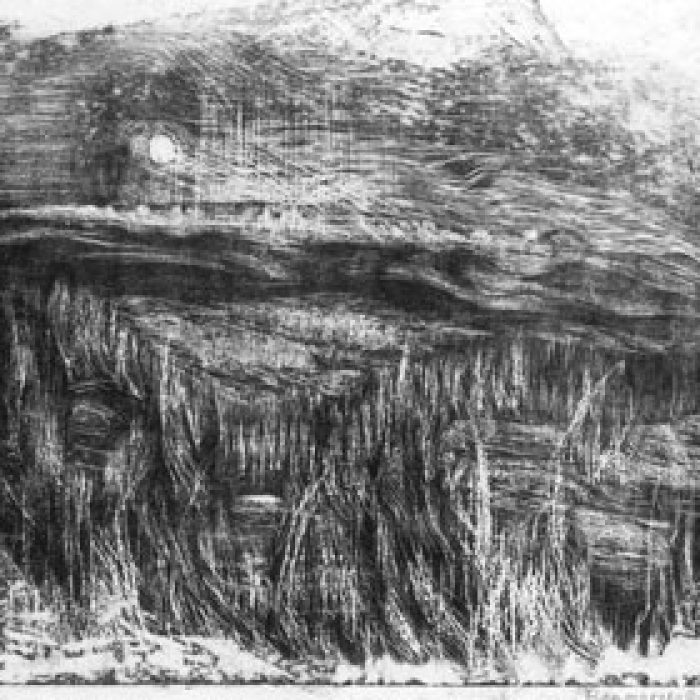Current exhibition:
SHINING GOLD – REPORT
Magret Bilger Gallery at Schlierbach Abbey. Visitors become with their body energy part of the room installation LEUCHTENDES GOLD which was created by the two Steyr concept artists Johannes Angerbauer Goldhoff and Andreas Schoenangerer.
A sacral-like space was created. Visitors can use their body energy (capacity) to create their very own “random organ tones” in it on five floor gold fields.
The Margret Bilger Gallery has been in existence since 1978. This year marks the 45th anniversary. Artist Renate Moran, as curator since 2023, has awakened the gallery’s reawakening. “Luminous Gold” is therefore the second exhibition, or room installation in the gallery space (UG) and a work presentation in the Panorama Cafe (1st floor).
The audio installation by Andreas Schoenangerer is a world first. Using the technology inherent in the theremin, which is considered the first electronic instrument ever, the entire space, and especially the gold in the room and the people who enter it, becomes a plaything.
The windowless gallery space, which with its backlit glass walls refers to the monastery’s resident stained glass artist and its namesake, who also became famous in this art, was expanded by Johannes Angerbauer Goldhoff to include a glass floor. The LIGHTING GOLD is the only work hanging on the glass wall. It is the only golden telephone directory page of the city of Enns from 1997.
Translated with www.DeepL.com/Translator (free version)
For the 5th time, Angerbauer has diagonally juxtaposed his very intimate HUMANgold kitchen installation with the four-part altarpiece by Andreas Schoenangerer. The kitchen is only on view until August 25. It will be dismantled as a tribute to the altarpiece!
Contact: Renate Moran 0664 1814594 www.renate-moran.at
Johannes Angerbauer 0676 3935527 www.human.gold
Andreas Schoenangerer 0680 2162819 www.anderer.cc
Duration: 27.06. – 15.09.2023
Open: Tue – Fri, 8:30 a.m. to 4 p.m.
Documentation at: www.human.gold/leuchtendesgold
#margretbilgergalerie
#stiftschlierbach
#luminousgold
#andreasschoenangerer
#renatemoran
#johannesangerbauergoldhoff
#spaceinstallation
#concept art
#art
#culture
This was the exhibition opening of 27 June 2023
Bright gold
Room installation in the Margret Bilger Gallery – Schlierbach Abbey
By the conceptual artists, Johannes Angerbauer and Andreas Schönangerer
In the second exhibition of the gallery’s reawakening, efforts were made to provide a contemporary approach to art. The room becomes an installation – worth seeing and experiencing.
It was raised and questioned and extended by a glass floor from Angerbauer’s collection, which was originally covered by gold, from which it now reveals countless names. In addition, an audioactive sound installation by Schönangerer wired into the floor, which is created by touching the moving visitors.
The installation is charged with the personal stories of Angerbauer and Schoenangerer.
Below and above, spatial installation and exhibition are connected. Reflective works by the two artists are complemented by the exhibition in the Panorama Gallery Level.
This spatial installation “Luminous Gold” correlates with the spatial installation “Unscharf maskieren” in the gallery of KUNSTSCHAFFENDEN OÖ in Linz. 13.6.-7.7.2023
Duration of the exhibition at Margret Bilger Galerie 27.06. – 15.09.2023
to the panorama and office opening hours
Café Panorama – Stift Schlierbach (stift-schlierbach.at)
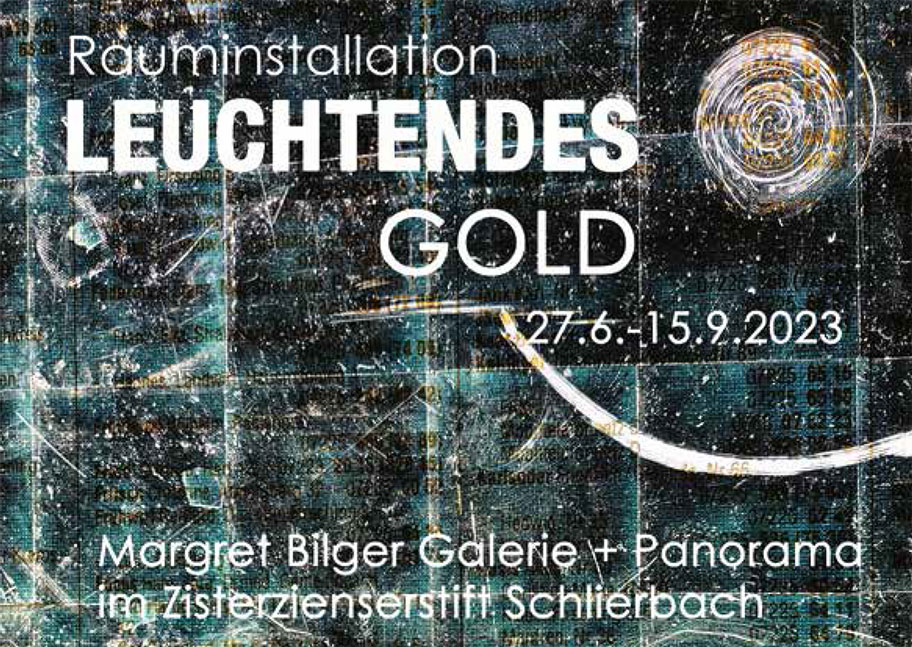
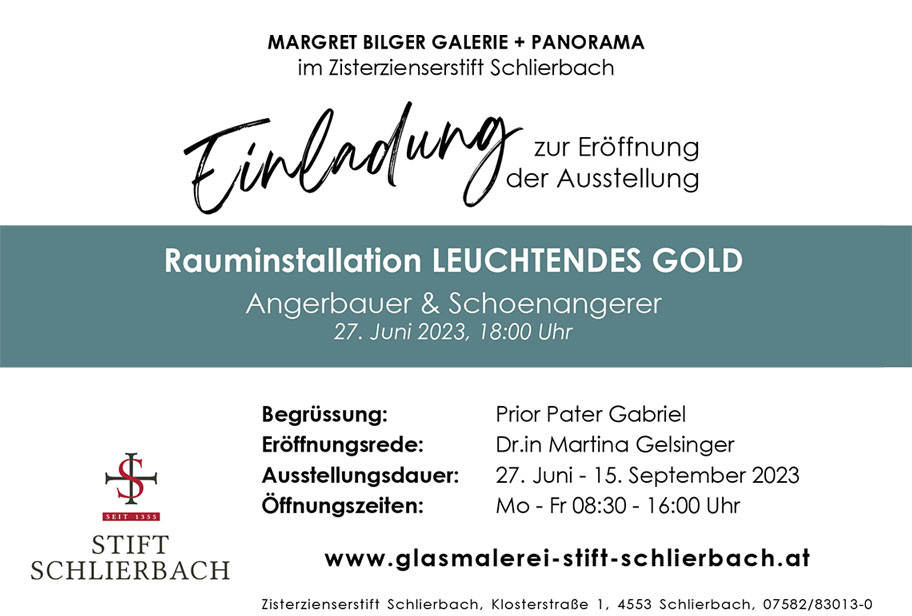
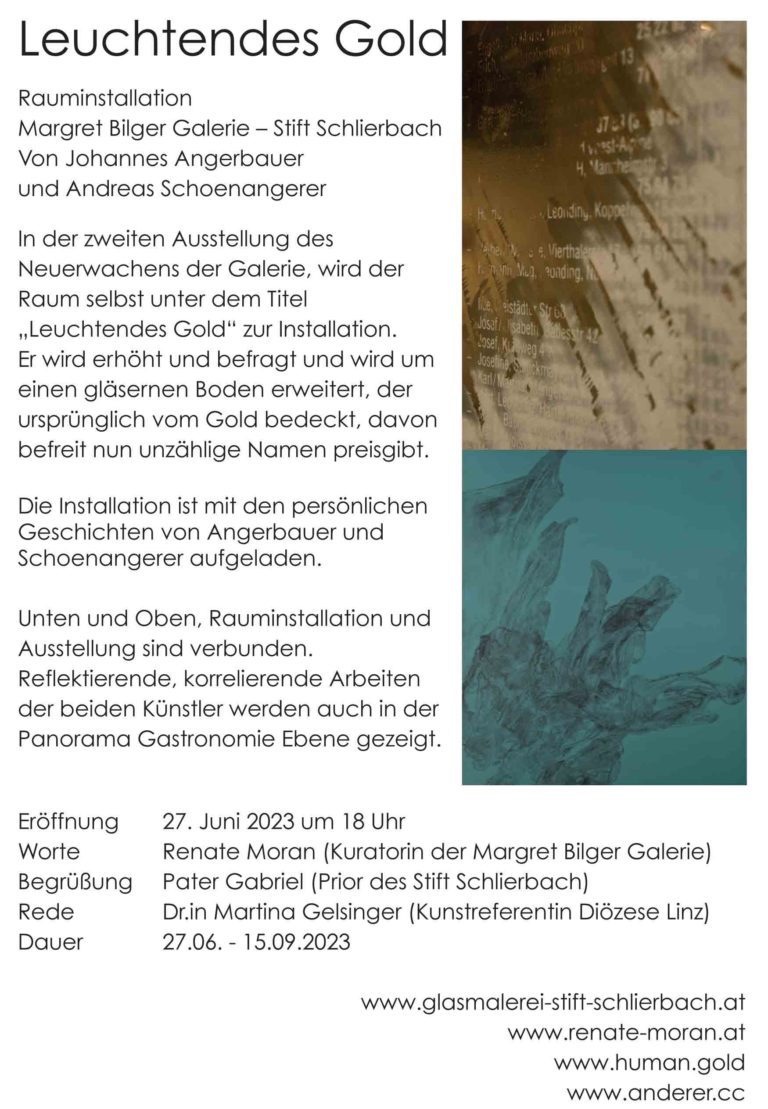
Bright gold
Room installation in the Margret Bilger Gallery – Schlierbach Abbey
By Johannes Angerbauer and Andreas Schoenangerer
In the second exhibition of the gallery’s reawakening, the space becomes an installation.
It is raised and questioned and extended by a glass floor, which was originally covered by gold, but now reveals countless names.
The installation is charged with the personal stories of Angerbauer and Schoenangerer.
Below and above, spatial installation and exhibition are connected. Reflective works by the two artists are also shown in the Panorama Gastronomie level.
This spatial installation correlates with the spatial installation “Unscharf maskieren” in the gallery of KUNSTSCHAFFENDEN OÖ in Linz. 13.6.-7.7.2023
Opening: June 27, 2023 at 6 p.m.
Welcome Father Gabriel (Prior of Schlierbach Abbey)
Words Renate Moran (Curator of the Margret Bilger Gallery)
Speech Dr.in Martina Gelsinger (Art Officer, Diocese of Linz)
Duration 27.06. -¬ 15.09.2023
www.glasmalerei-¬stift-¬schlierbach.at
www.renate-¬moran.at
www.human.gold
www.anderer.cc
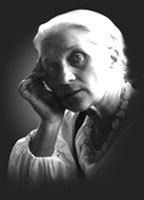
Margret Bilger
Graz 12.08.1904 –
Schärding 24.07.1971
Life & work of Margret Bilger
Margret Bilger, renowned for her woodcuts and glass paintings, is an outstanding artist of the last century. In her early years as an artist, she was known for her woodcuts, which were a modification of the expressionistic xylographic tradition, thus being one of only few women of her time leaving a distinctive print-graphic work. Later on, she found her vocation in glass painting, creating windows for many houses of worship in Austria, in several European countries, even in the Middle East and in Asia, as well as in the USA.
Her numerous stays at the Schlierbach Monastery were particularly creative and fruitful in the life of Margret Bilger. She developed a deep friendship with Father Petrus who was in charge of the glassworks studio. The bucolic surroundings of Schlierbach were her artistic inspiration and sanctuary. She participated in several competitions and exhibitions and earned many awards.
In the 1950s, Margret Bilger reached the peak of her worldwide recognition.
In the 1960s, she created textile works, reverse glass paintings, watercolor paintings and drawings.
Margret Bilger had a great influence on the development of stained glass, and particularly her work created in Schlierbach has worldwide recognition.
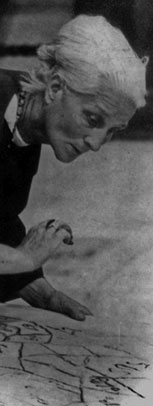
Timetable
- 1904
On August 12th, Margareta Katharina Anna Bilger is born in Graz. Her father, Ferdinand Bilger (1875-1949), is a historian and university professor, her mother Margit (1874-1933) is a daughter of the Swiss-born lithographer August Matthey-Guenet, who had founded an art print studio in Graz together with his brother Ernst. She has two siblings, Ferdinand (1903-1961), a chemist and painter, Irmtraut (1910-1999), a tapestry artist.
- 1907-11
The Bilger family lives in Heidelberg. Margret’s father is working on a German law dictionary. Together with the children, he converts to the Protestant faith of his wife.
- 1911
Back in Graz, Grete attends the Protestant primary school. Father Bilger inherits the house Leoprechting 10 in Taufkirchen an der Pram, Upper Austria from his mother Anna, nee Hoerandtner.
- 1916
She attends Public school in Graz and has a great affection for her governess, Miss Else Becht.
- 1917-20
Moderately successful, she attends Grammar school in Graz.
- 1920
Myocardial disease, mononucleosis; she leaves Grammar school in April and goes to Taufkirchen for recovery. In autumn, she enters the College of Arts & Crafts in Graz.
- 1921
Enthusiastic participation at the „Wandervogel“, a scout and hiking group in Graz.
- 1922
She wants to commit herself to be a deaconess. Her parents, being aware of her artistic talent, dissuade her from doing so. In October, she starts studying graphic arts and design at the College of Arts & Crafts in Stuttgart, Germany in the classes of Prof. Schneidler and Prof. Sigrist (woodcuts and script).
- 1923
She changes to the reformist College of Arts Albrecht Leo Merz in Stuttgart.
- 1924
She returns home due to a crisis with fever and convulsions. From July to October, she is working as an assistant nurse with children suffering from bone tuberculosis at Stolzalpe, Styria. In October, she fails the qualifying examination at the College of Arts & Crafts in Vienna and attends as a guest student.
- 1925-29
Regular student at the College of Arts & Crafts in Vienna in the classes for graphic arts and glass painting of the professors Loeffler and Klaus, and in the script class of Prof. Larisch. Starting from June 1926, she lives in Nussdorf in a home for difficult children of the Baroness Mayer. Her summers and autumns she spends in Taufkirchen.
- 1928
In June, Margret Bilger earns the first Austrian State award for „the best student of the College of Arts & Crafts”.
- 1929
After finishing her studies, she works as a sales assistant at the „Wiener Werkstaette“, hoping eventually to get a regular employment as a co-artist.
- 1930
She applies for a position at the home for difficult girls in Hirtenberg, Styria and spends the autumn in Taufkirchen. The painter and close friend Walter Honeder visits her. They make plans for the future and she drops the idea of going to Hirtenberg.
- 1931
She does her first landscape woodcut work „Hills in Upper Austria“. She gets an order for a series of woodcuts showing Austrian Saints for an edition of postcards.
- 1932
She spends springtime in Vienna, July to November she stays in Taufkirchen. She works with several techniques: woodcuts, oil painting, reverse glass painting, embroidery and drawing.
- 1933
She goes to Graz to care for her mother and works on a tapestry for the museum in Graz. She falls in love with the shoemaker Markus Kastl. Her mother dies on April 19th. Margret marries Markus Kastl on November 24th.
- 1934
March 18th: She suffers from eclampsia and has a stillbirth. She has an exhibition at the Sezession in Graz.
- 1935
She works on toys and children’s books. For the first time the Albertina in Vienna buys one of her works and she gets the silver medal of the city of Graz.
- 1936
In autumn, she makes a journey to her friend from the College of Arts & Crafts, Elisabeth Scherfig-Karlinsky, to Denmark, on her way passing Kassel (Rembrandt) and Hamburg (Paula Modersohn-Becker and Marees), as well as Hannover and Heidelberg.
- 1937
She breaks up with Markus Kastl. Her brother Ferdinand and her cousin Goldi Matthey volunteer for paramedics in the Spanish civil war. In autumn, she meets the musician Hubert Zanoskar in Taufkirchen. She tries to find a publisher for her children’s books.
- 1938
In May and June, she and Else Meyerhofer visit the painter Fritz Pauli in Cavigliano, Tessin, Switzerland. On October 19th, she visits for the first time Alfred Kubin in Zwickledt, who from now on will hold his hand over her graphic production, which is developing rapidly now. In November, she goes to Vienna.
- 1939
She stays in Vienna until March where she tries in vain to gain a professional foothold. Back in Taufkirchen, she decides to stay there for good and to work as an artist, without the safeguard of a regular job. On May 3rd, she tells Alfred Kubin about her decision.
- 1941
She travels to Southern Tyrol and the Garda Lake and makes watercolors and portrait drawings.
- 1942
Death of her brother-in-law Franz Blum in Russia. For her special xylographic method, she uses the name “Holzriss” (woodcut). In the catalog of the Munich exhibition, Kubin for the first time uses “Holzriss” officially.
- 1943
The first of four Bilger exhibitions at Guenther Franke’s in Munich takes place in April. She changes her signature from Grete Bilger or G.B. to Margret Bilger or M.B. In June, she follows the footsteps of Alfred Kubin and Adalbert Stifter in the Bohemian Forest and in Oberplan, Czechia.
- 1946
In Voecklabruck, Upper Austria, she meets the Bauhaus-painter Hans Breustedt. Her sister’s family moves into Margret’s house in Leoprechting, Taufkirchen.
- 1945-52
She is under contract with the arts dealer Wolfgang Gurlitt.
- 1949
In April her father dies. In May, an extensive exhibition of her woodcuts and watercolor painting takes place in the Albertina in Vienna.
- 1950
First working stay at the Monastery Schlierbach for a glass window. The glass painting work starts getting the focus of her creative work.
- 1952
She represents Austria at the Biennale in Venice. The first one of two exhibitions in Otto Kallir’s gallery St. Etienne takes place in New York.
- 1953
She gets married to Hans Breustedt and he moves into her house in Taufkirchen.
- 1954/55
She works on a window for a Christening Chapel in Liesing, Vienna, gets the gold medal for glass painting at the International Exhibition of Christian Arts in Vienna and participates at the Biennale in Sao Paulo.
- 1955-59
She makes windows for Mattersburg, Burgenland, for Don Bosco in Vienna-Erdberg, for the Cathedral in Eisenstadt, for Bad Kreuzen, Upper Austria, for Duncan, Oklahoma, USA, etc.
- 1960-62
She works on the monumental windows for Rohrbach/Lafnitz, Styria, for Salzburg-Hernau, for Lenzing, Upper Austria. In summer 1960, journey to Assisi, Italy. The Republic of Austria awards her the title „Professor“.
- 1963-64
In the stained glass studio in Schlierbach, she makes seven windows for the parish church of Rainbach nr. Freistadt, Upper Austria, two windows for the parish church in St. Marienkirchen, Upper Austria as well as thirteen windows for the late Gothic Bernardi Chapel of the Holy Cross Monastery.
- 1965
She spends more time in Taufkirchen. Apart from further stained glass windows, she mainly creates woven pictures, reverse glass paintings, watercolors, drawings and poems.
- 1966
She converts to the roman-catholic confession.
- 1971
She participates in the competition for stained glass windows for the Saint Steven Cathedral in Vienna and until June, she works on a window for a church in Duisburg-Hamborn, in Germany.
Margret Bilger dies on July 24th in Schärding/Inn and is buried in Taufkirchen an der Pram.
- 1975
In the summer of 1975, the provincial government of Upper Austria initiates an exhibition at the Schlierbach Monastery in memory of this great artist.


